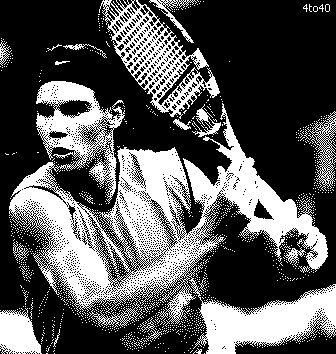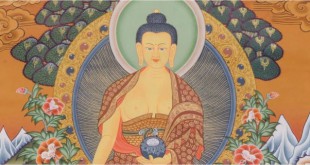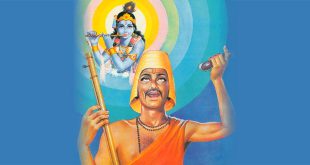 Rafael Nadal — Nicknamed “Rafa”, Rafael Nadal has took the tennis world by storm over the past 5 years as he has made his way on the professional tennis circuit to number 2 in the world with a staggering clay-court winning streak of 60 consecutive matches.
Rafael Nadal — Nicknamed “Rafa”, Rafael Nadal has took the tennis world by storm over the past 5 years as he has made his way on the professional tennis circuit to number 2 in the world with a staggering clay-court winning streak of 60 consecutive matches.
He was born June 3rd 1986 in Manacor, Mallorca to Sebastian and Ana Maria. He has great sporting heritage as his Uncle is former F.C. Barcelona footballer Miguel Angel Nadal. Between 1986 and 2001 (the year in which he turned pro at only age 15) he developed a brilliant all round game playing left-handed despite being naturally right-handed.
His rise since then has been a quick and exhilarating one. In 2002, he won his first ATP match at Majorca at the age of 15, defeating Ramon Delgado to become the ninth player in the Open Era to win an ATP match before his 16th birthday. One year later in 2003 he became the second-youngest player to be ranked among the world’s top 100 singles players and earned ATP Newcomer of the Year. At his Wimbledon debut, at only age 16, he became the youngest player to reach the 3rd round since 16-year-old Boris Becker in 1984 and in July 2003 he reached the Spanish championships where he lost to Lopez.
He continued to improve in 2004 and by 2005 had climbed the world rankings to number 5. This made him the youngest player to make it into the Top 10 since Andrei Medvedev in 1993. During this season he won two ATP Masters Series events in Monte Carlo and Rome and managed an astonishing winning streak of 25 consecutive matches.
Among his other historical achievements he became the fourth-youngest Roland Garros champion in the Open Era defeating Argentina’s Mariano Puerta in the final, the seventh player to win a Grand Slam in his first appearance at the event and the first teenager to win a Grand Slam since Pete Sampras won the 1990 US Open at age 19.
During this period the intense rivalry between Nadal and Federer continued to grow reaching a climax in 2006 where Nadal beat Federer four times. First, on March 4, 2006, at the final in Dubai, where he won 2-6, 6-4, 6-4. Nadal then defeated Federer again at the Monte Carlo Masters 6-2 6-7 6-3 7-6 before meeting and beating him for a third time in this season at the finals in Rome where he won a close victory – 6-7 7-6 6-4 2-6 7-6.
Their last encounter came at the finals in the French Open. Federer now sought to turn around his dismal record against Nadal, while Nadal was seeking to defend his French Open title. In the least competitive of their 2006 matches Nadal won a 4 set victory and will enter the next French Open with a perfect 14-0 tournament record.
Nadal began the year by participating in the Capitala World Tennis Championship in Abu Dhabi, United Arab Emirates. He defeated compatriot David Ferrer 7–6(3), 6–3 to reach his second final in the exhibition tournament. In the final, Nadal defeated Robin Soderling 7–6(3), 7–5.
Nadal participated in an Australian Open warm-up tournament, the Qatar ExxonMobil Open ATP 250 event in Doha, where he lost in the finals. He defeated Simone Bolelli of Italy 6–3, 6–3 in the first round and in the second round, Nadal defeated Potito Starace 6–2, 6–2. Nadal’s progress continued in the quarterfinals when he was up 6–1, 2–0 against Steve Darcis of Belgium and who eventually retired from the match. He defeated fifth seed Viktor Troicki 6–1, 6–3, winning 11 straight games in the semi-finals. Nadal lost to Nikolay Davydenko 6–0, 6–7(8), 4–6 in the finals despite dominating in the opening set and holding two match points in the second set. Davydenko also defeated Roger Federer in the semifinals before advancing to the finals.
In the first round of the Australian Open, Nadal defeated Peter Luczak of Australia 7–6(0), 6–1, 6–4. In the second round, he beat Lukas Lacko 6–2, 6–2, 6–2. In the third round, he was tested by Philipp Kohlschreiber, finally beating him 6–4, 6–2, 2–6, 7–5. In the fourth round, he beat Ivo Karlović of Croatia, 6–4, 4–6, 6–4, 6–4. In the quarter-finals, Nadal pulled out at 3–0 down in the third set against Andy Murray, having lost the first two sets 6–3, 7–6(2). After examining Nadal’s knees, doctors told him that he should take two weeks of rest and then two weeks of rehabilitation.
Nadal reached the semifinals in singles at the BNP Paribas Open in Indian Wells, where he was the defending champion; however, eventual champion Ivan Ljubicic defeated him in three sets. He and countryman Lopez won the doubles title, though, as wildcard entrants against number one seeds Daniel Nestor and Nenad Zimonjic. This boosted his doubles ranking 175 places to world number 66, whereas he was 241st before Indian Wells. After Indian Wells, Nadal reached the semi-finals of Sony Ericsson Open where he lost to eventual champion Andy Roddick in three sets.
Nadal reached the final of the Monte-Carlo Rolex Masters in Monaco after beating fellow Spaniard David Ferrer 6–3, 6–2 in the semi-finals. This was Nadal’s first tour final since Doha earlier in the year. He won the final with a 6–0, 6–1 score over his compatriot Fernando Verdasco. He lost only 14 games throughout all five matches, the fewest he ever lost en route to a championship, and the final was the shortest Masters 1000 final in terms of games in history (since 1990). With this win, Nadal became the first player in Open Era to win a tournament title for six straight years.
Unlike in previous years, Nadal next chose to skip the Barcelona tournament (despite being that event’s five-time defending champion), and his next tournament was the 2010 Internazionali BNL d’Italia. He defeated Philipp Kohlschreiber, Victor Hanescu, and Stanlias Wawrinka all in straight sets to win his 57th straight match in April. In the semis, he faced a resilient Ernests Gulbis, who defeated Roger Federer earlier in the tournament and took Nadal to three sets, for the first time, this clay court season. Nadal eventually prevailed with a 6–4, 3–6, 6–4 in two hours and forty minutes. He then defeated compatriot David Ferrer in the final 7–5, 6–2 for his fifth title at Rome to equal Andre Agassi’s record of winning 17 ATP Masters titles.
Nadal then entered the 2010 Mutua Madrilena Madrid Open, where he had finished runner-up the previous year. Being one of the top eight seeds, he received a bye in the first round. In the second round, he defeated qualifier Oleksandr Dolgopolov Jr in straight sets. He then played the six foot nine inch tall American John Isner. Nadal comfortably came through in straight sets, 7–5, 6–4. He defeated Gael Monfils in the quarterfinals 6–1, 6–3 and his countryman Nicolas Almagro in the next round, who was playing in his first Masters 1000 semifinal, 4–6, 6–2, 6–2. The first set of his match against Almagro would be just the second set he lost on clay up to this point in 2010. Nadal then defeated longtime rival Roger Federer 6–4, 7–6(5), avenging his 2009 finals loss to Federer. The win gave him his 18th Masters title, breaking the all-time record. He became the first player to win all three clay court Masters titles in a single year and the first player to win three consecutive Masters events. Nadal moved back to No. 2 the following day.
Entering the French Open, many were expecting another Nadal-Federer final. However, this became impossible when rival Robin Soderling defeated Federer 3–6, 6–3, 7–5, 6–4 in the quarterfinals. The failure of Federer to reach the semi-finals allowed Nadal to regain the world number 1 ranking if he were to win the tournament. Nadal advanced to the final and defeated Soderling 6–4, 6–2, 6–4 to win the French Open. The win gave Nadal his seventh Grand Slam, tying him with John McEnroe; John Newcombe and Mats Wilander on the all-time list, and allowed Nadal to reclaim the position of ATP World Number One denying his biggest rival Roger Federer the all time record for weeks at No. 1. By this win, Nadal became the first man in history to win the three Masters series on clay and the French Open. This was dubbed by the media as the “Clay Slam”. This victory at Roland Garros marked the second time (2008) that Nadal had won the French Open without dropping a single set (tying the record held by Bjorn Borg). With the win in Paris he also booked his place at the World Tour Finals in London, and became the first player to win five French Open titles in six years.
In June Nadal entered the AEGON Championships—which he won in 2008—at the prestigious Queen’s Club. He played singles and doubles at this grass court tournament as a warm up for the Wimbledon Championships. Being one of the top eight seeds, he received a bye in the first round. In the second round, where he played his first match on grass since winning Wimbledon 2008, he defeated Marcos Daniel easily, 6–2, 6–2 . Then, in the third round, he played Denis Istomin of Uzbekistan, whom he defeated 7–6(4), 4–6, 6–4, to advance to the quarterfinals. However, he was defeated by compatriot Feliciano Lopez 6–7(5), 4–6 in that quarterfinal stage. At the 2010 Wimbledon Championships Nadal beat Kei Nishikori 6–2, 6–4, 6-4. Nadal was taken to the limit by Robin Haase winning 5-7,6-2,3-6,6-0,6-3. He next plays Philipp Petzschner in the third round.
 Kids Portal For Parents India Kids Network
Kids Portal For Parents India Kids Network






